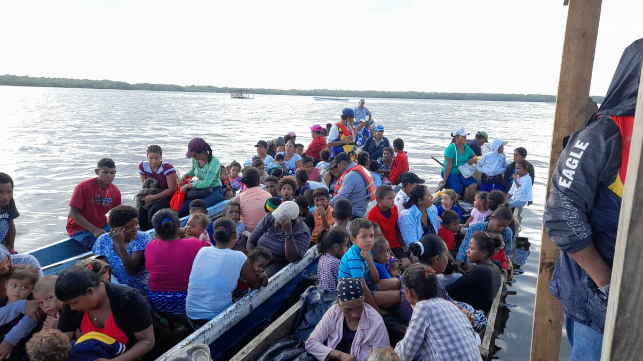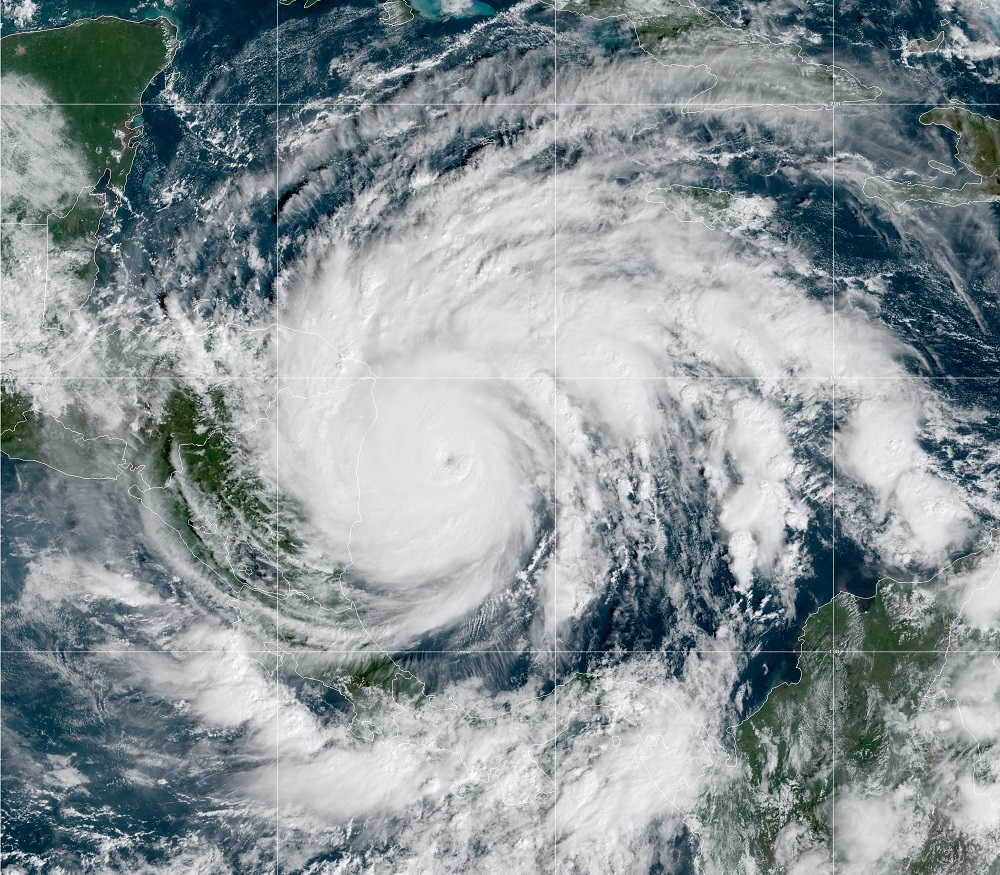Photos: Nicaragua Evacuates Coastal Villages Ahead of Hurricane Iota

As Hurricane Iota barrels towards Central America's eastern coastline, Nicaragua's naval forces have launched an evacuation campaign to ferry coastal residents out of harm's way.
Using small launches, Nicaraguan naval personnel have carried about 1,500 people away from Cabo Viejo, Wawa Bar, Caya Miskitos and other communities in the hurricane's path. They have also helped local fishermen to relocate their boats to safe port facilities while maintaining COVID-19 control measures.
Como medida de prevención ante la amenaza del #HuracanIOTA, efectivos militares y medios de superficie de la Fuerza Naval del @EjercitoNic, realizaron evacuación de pobladores de #SetNetPoint hacia #LagunadePerlas en la Costa Caribe Norte. #TodoPorLaPatria pic.twitter.com/zHCsdHP98J
— Ejército de Nicaragua (@EjercitoNic) November 16, 2020
Continuando con las medidas de prevención ante la amenaza del #HuracanIOTA, el #DistritoNavalCaribe evacuó pobladores desde la desembocadura de #Prinzapolka hacia la comunidad de #Konwatla en la Costa #CaribeNorte. #TodoPorLaPatria pic.twitter.com/R6SBRAQNeM
— Ejército de Nicaragua (@EjercitoNic) November 16, 2020
La #FuerzaNaval del @EjercitoNic como medida de prevención ante el riesgo de la #TormentaTropicalIOTA, en coordinación con INPESCA, trasladó a personas evacuadas de la comunidad de #WawaBar hacia #Lamlaya, Costa Caribe Norte. #TodoPorLaPatria pic.twitter.com/BqGqKDJuoy
— Ejército de Nicaragua (@EjercitoNic) November 14, 2020
Como medida de prevención ante el riesgo de la #TormentaTropicalIOTA, efectivos militares y medios de la #FuerzaNaval del @EjercitoNic, realizaron evacuación de personas desde #CaboViejo hacia los albergues ubicados en #PuertoCabezas, Costa Caribe Norte. #TodoPorLaPatria pic.twitter.com/WvOYPKoHCE
— Ejército de Nicaragua (@EjercitoNic) November 14, 2020
Honduran naval forces have been evacuating residents from coastal regions near the Nicaraguan border, including outlying areas of the Caratasca lagoon. 1,300 have been transported by boat or truck from the small communities of Yahurabila, Kanku and Yamantha for shelter at Puerto Lempira.
#Evacuaciones
— Fuerzas Armadas de Honduras (@FFAAHN) November 16, 2020
Efectivos de la Base Naval de Caratasca llevan a cabo evacuaciones preventivas en el sector de Crata, a orillas de la laguna de Caratasca para ser movilizados al sector de Prumnitara, en el departamento de Gracias a Dios. #FFAA#IOTA#SalvandoVidas pic.twitter.com/7kCuBsuUZp
#Evacuaciones
— Fuerzas Armadas de Honduras (@FFAAHN) November 16, 2020
730 damnificados se reportan en las operaciones de evacuación, en el sector de Irlaya, Municipio de Villeda Morales, departamento de Gracias a Dios, a consecuencia de los daños ocasionados por el Huracán #Iota.#SalvandoVidas#MedidasDePrevención pic.twitter.com/HVCu0UjhGS
The U.S. Coast Guard has been busy in the same region of Honduras. After Hurricane Eta, the cutter Seneca and her embarked HITRON helicopter aircrew helped deliver humanitarian aid and evacuate victims near Puerto Lempira. U.S. Southern Command remains engaged in the disaster relief effort, and its assets will be in place for emergency assistance in the wake of Hurricane Iota.

Seneca's HITRON squadron delivers aid and provides evacuation near Puerto Lempira, November 13 (USCG)

Seneca's HITRON squadron delivers aid and provides evacuation near Puerto Lempira, November 13 (USCG)
"Catastrophic" risk
Iota underwent rapid intensification over the weekend, increasing in strength from a tropical storm to a dangerous Category 5 hurricane. It is the region's second hurricane in a fortnight, as well as the 30th named storm of the 2020 Atlantic hurricane season. Its formation marks a new record, easily surpassing the 28-storm season of 2005.
Iota also gained category 5 strength later than any other storm on record, beating the Cuba Hurricane of 1932, which reached full power on November 8 of that year.
"This remains a catastrophic situation for northeastern Nicaragua with an extreme storm surge of 15-20 ft forecast along with destructive winds and potentially 30 inches of rainfall, and it is exacerbated by the fact that it should make landfall in almost the exact same location that category 4 Hurricane Eta did a little less than two weeks ago," warned the National Hurricane Center.
Life-threatening flash floods are expected from the storm's heavy rainfall, with the effects potentially worsened by the previous impact of Hurricane Eta. The areas affected by the storm's northern quadrants are expected to receive the most rain, putting areas of Honduras that were hardest hit during Eta squarely in harm's way.
Image courtesy National Hurricane Center

